In 2018, Matthew Butler explained the visual effects work done by Digital Domain on Ready Player One. Today, he tells us about his work on Morbius.
How did you get involved on this movie?
Wow, can you believe it was three years ago now?! I don’t remember the exact details, but I do remember film producer Lucas Foster playing a huge role in the very early days. Shortly after, I met with the director Daniel Espinosa on the Sony lot, and also chatted with Jared Leto, who played Morbius, at Digital Domain. Then I blinked and I was in England prepping.
What was your feeling to be involved on such an iconic universe?
It’s a bit intimidating, but I was very excited. It was really incredible to work with such a well known actor doing facial performance, and performing through monster geometry. One of the big challenges we needed to address was that the iconic image of Morbius features a white face and red eyes, but we needed him to look photorealistic and physically plausible. It also had to clearly resemble Jared Leto – both in physical features as well as idiosyncratic behavior.
How was the collaboration with Director Daniel Espinosa?
It was great collaborating with Daniel. He knows the character of Morbius well, so it was easy for him to communicate his ideas given his passion for comics and the character. Daniel is visually specific and clear in what he wants. We saw eye-to-eye on most things, so we had a pretty good short-hand.
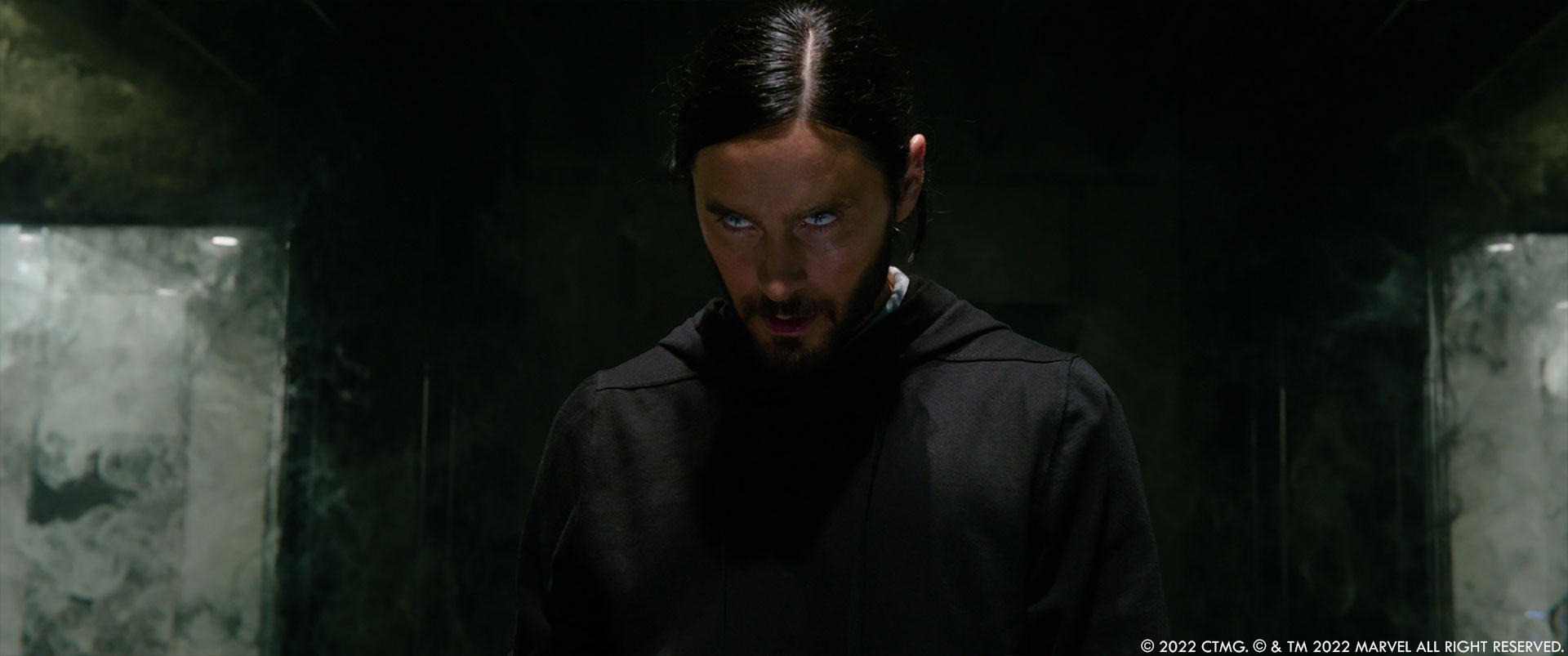
What was his approach and expectations about the visual effects?
Daniel and I both agreed that the visual effects should be grounded in reality. That was really important for us, but at the same time, we also wanted to be sure we honored the expectations of the comic world.
How did you organize the work with your VFX Producer?
There were a handful of teams working together on Morbius, and each one brought something specific and exceptional to the table. Because of Digital Domain’s incredible work with Thanos in the Avengers films, I wanted them to continue expanding their work using AI-assisted facial performance techniques for our monstrous vampires and they were also responsible for developing the final creature design, which consisted of several phases. For most of the emaciation work of Jared Leto, we worked with the VFX Studio Lola. Out of the UK, One of Us did a lot of environment work and bat animation. We also worked with SPI when the “Vulture” was added. All the companies were great and did excellent work, and it allowed us to keep the work loads parallel process without becoming unmanageable.
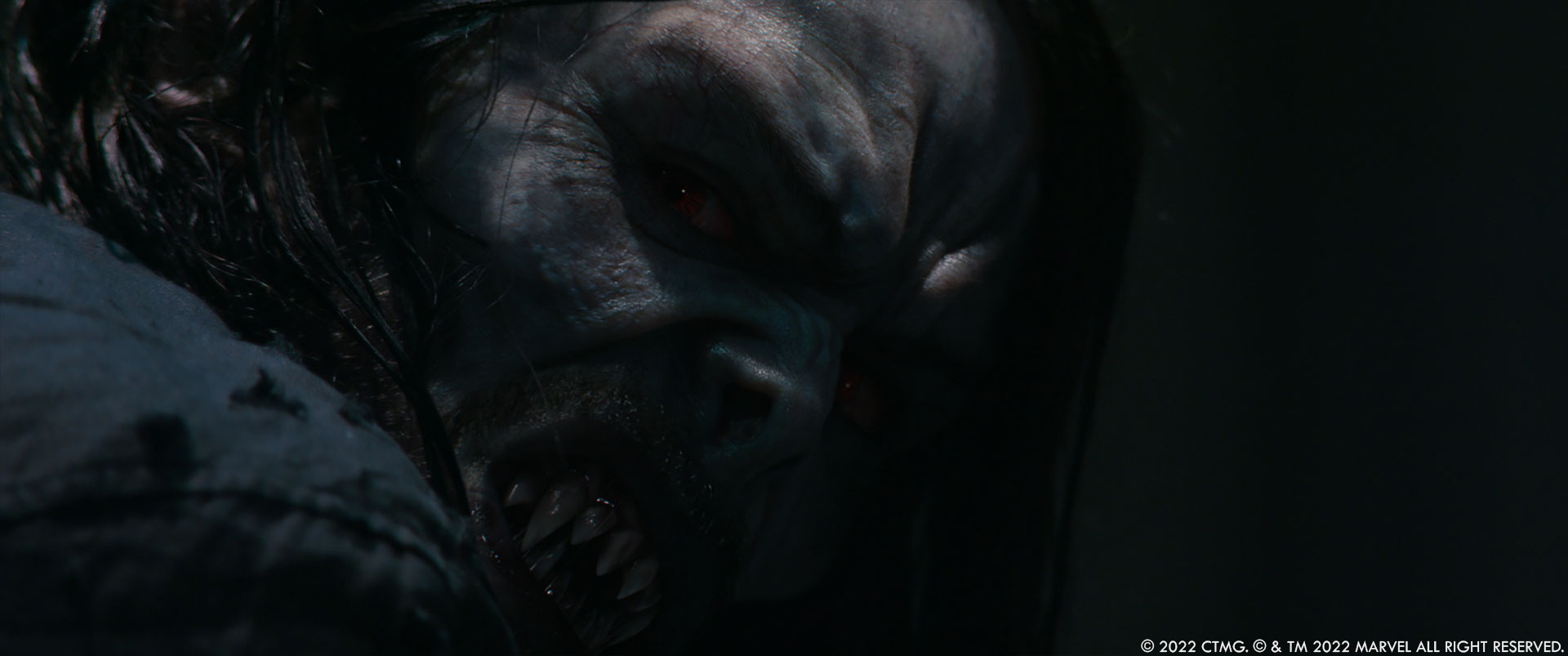
How did you choose the various vendors?
It was based on talent, availability, proximity and personality. And they were all great!
Can you tell us how you split the work amongst the vendors?
We tried to avoid overlap, and we didn’t want the studios to slow down by forcing them to share work that they may not have been familiar with. Still, sharing is a necessity these days, and we had no problems.
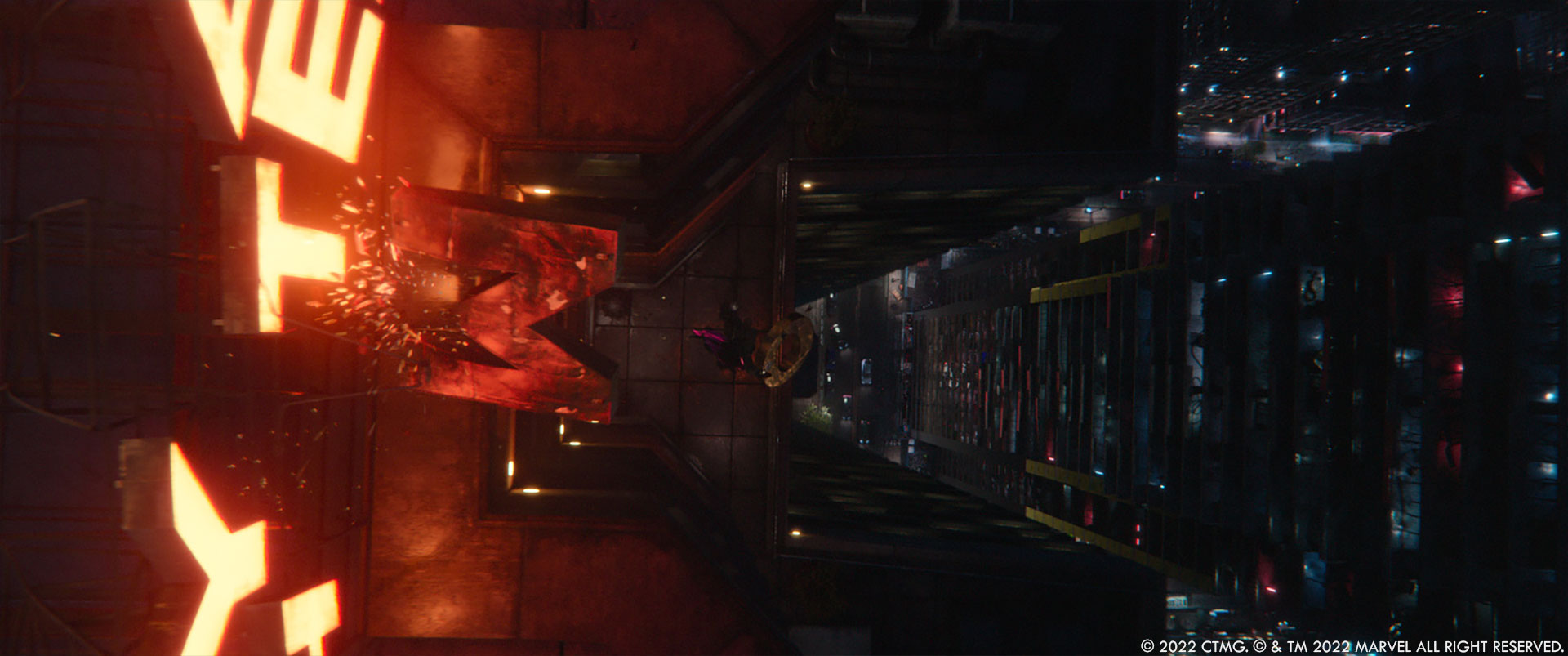
How was the collaboration with their VFX Supervisors?
Collaborative! That’s the job, right? We employed talent for their strengths, and let them flourish at what they do.
Can you elaborate about the design and creation of the Dr. Morbius transformation?
There were key milestones we needed to hit. The transformation needed to honor the comic, yet be driven by the actor’s performance. It also needed to look believable in terms of lighting response and dynamics. We needed to land on key poses at times too. Sometimes we wanted to achieve the “sleight-of-hand” subtle transitions that leave you wondering how you got there, and then at other times we used a more brutal push to get us in and out. There were also times where we wanted to leave audiences wondering if there was even a transformation at all.
For the transformations, it all came down to Jared Leto. At one end of the spectrum was the character of Dr. Morbius, while on the other end were multiple monstrous versions of the vampire Morbius. This, of course, was true of Matt Smith’s Milo too.
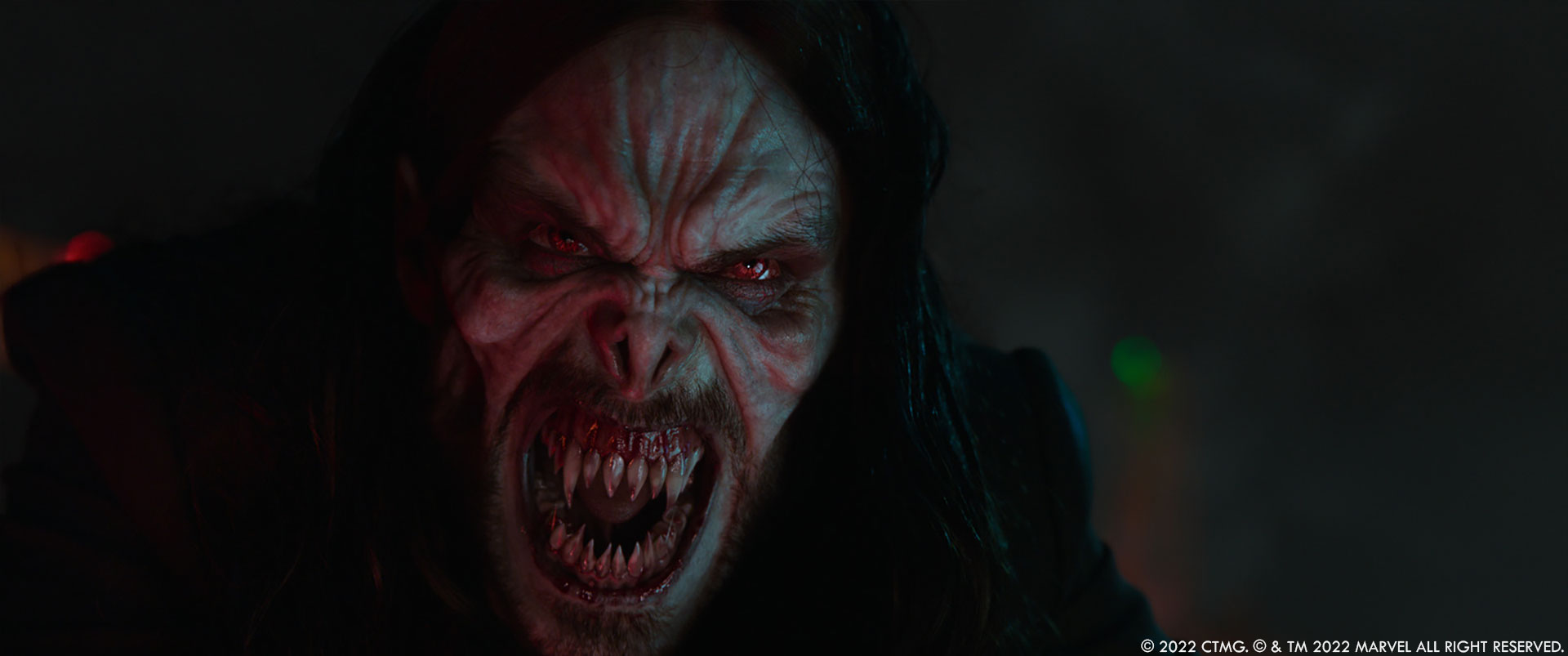
Beside the comics, what kind of references and influences did you receive for the transformation?
We didn’t really receive any transformation reference, instead we created our own. We set the boundaries based on the necessary requirements inherent in the monster design, and the actors’ performances.
What was the main challenges for the transformations?
The monster end of the spectrum is fun and allows us to be creative, but the actual performer side of the transformation was more of a challenge. To match the actor, you have to, well, match the actor!
The movie is full of impressive slow-motion shots. Can you explain in detail about their filming and creation?
The choice to use variable speed camera work was primarily made to showcase both the “cavitation” speed effects that created shock waves, as well as to capture quintessential comic poses. Most of the time we conceived these designs during previs, which determined which shots would require higher speed cameras.
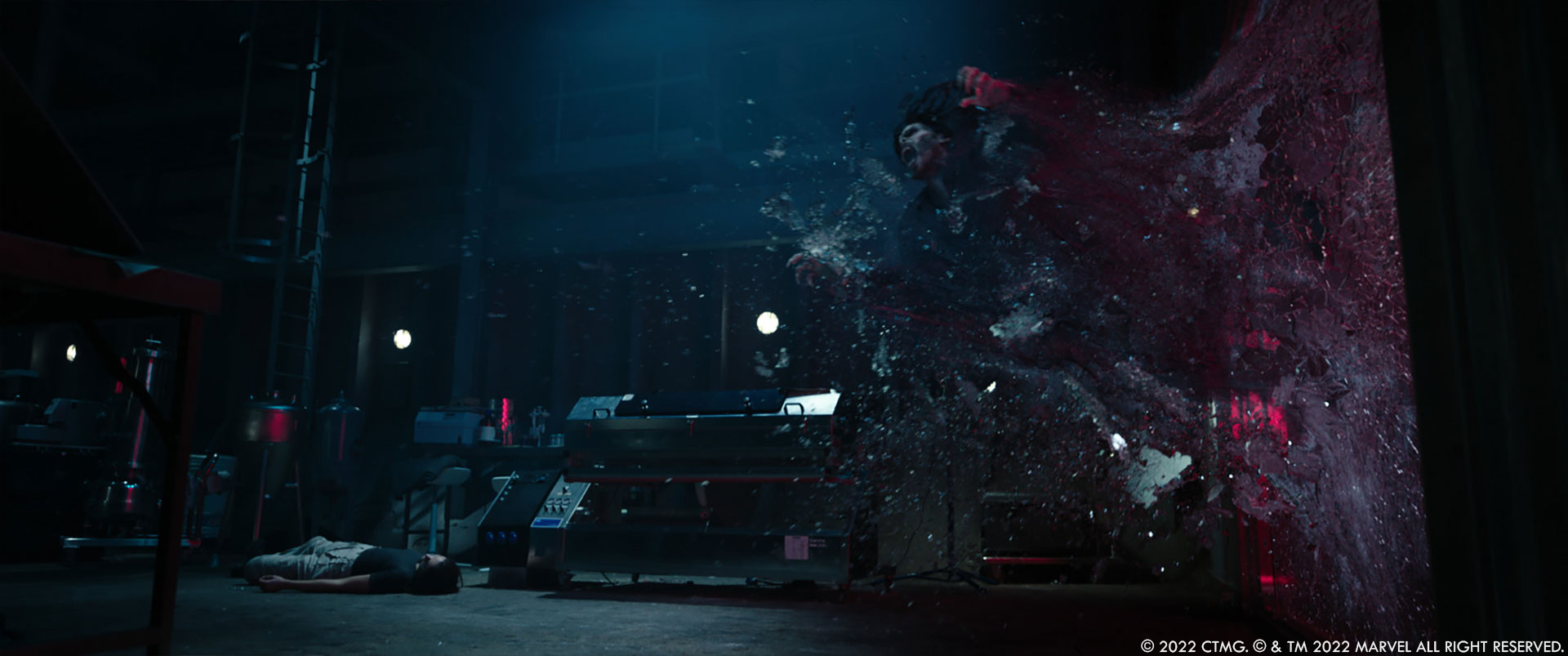
What was the main challenges with the slow-motion shots?
Slow motion shots can be a blessing and a curse. They allow us to show off the complexity and intricacies of the effects, but there’s very little room to hide!
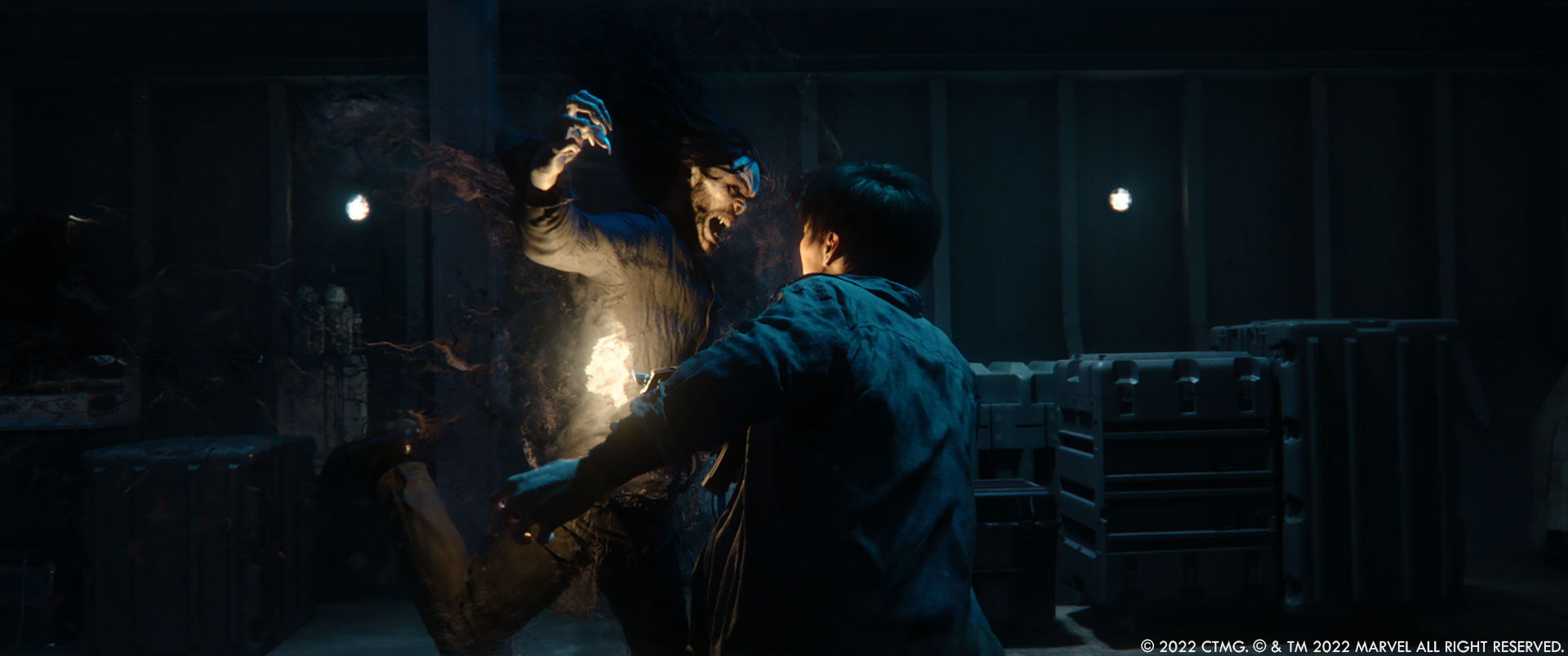
How did you create the various digital doubles?
For full body action shots, we used full body scans, both body and face rigs, and cloth sims.
For super detailed face shots, we relied on detailed scan data, custom rigs and AI training. The scan data included light-stage captures, as well as animated geometry scans and image-based performance capture that we used as training data for machine learning.
How did you work with SFX and stunts teams for the fight and the super strengths of Morbius and Milo?
Previs began with stunt-vis. Gary Powell (Stunt coordinator and 2nd unit director) and I would get together and discuss our approach. We would start with what could be done practically, and then determine where we would have to hand off the stunts to CG. Gary’s stunt team was incredible, so we started there first.
The subway shot is a good example. We prevised and stunt-vised back and forth until we had a proxy of what to shoot that was both exciting as well as achievable.
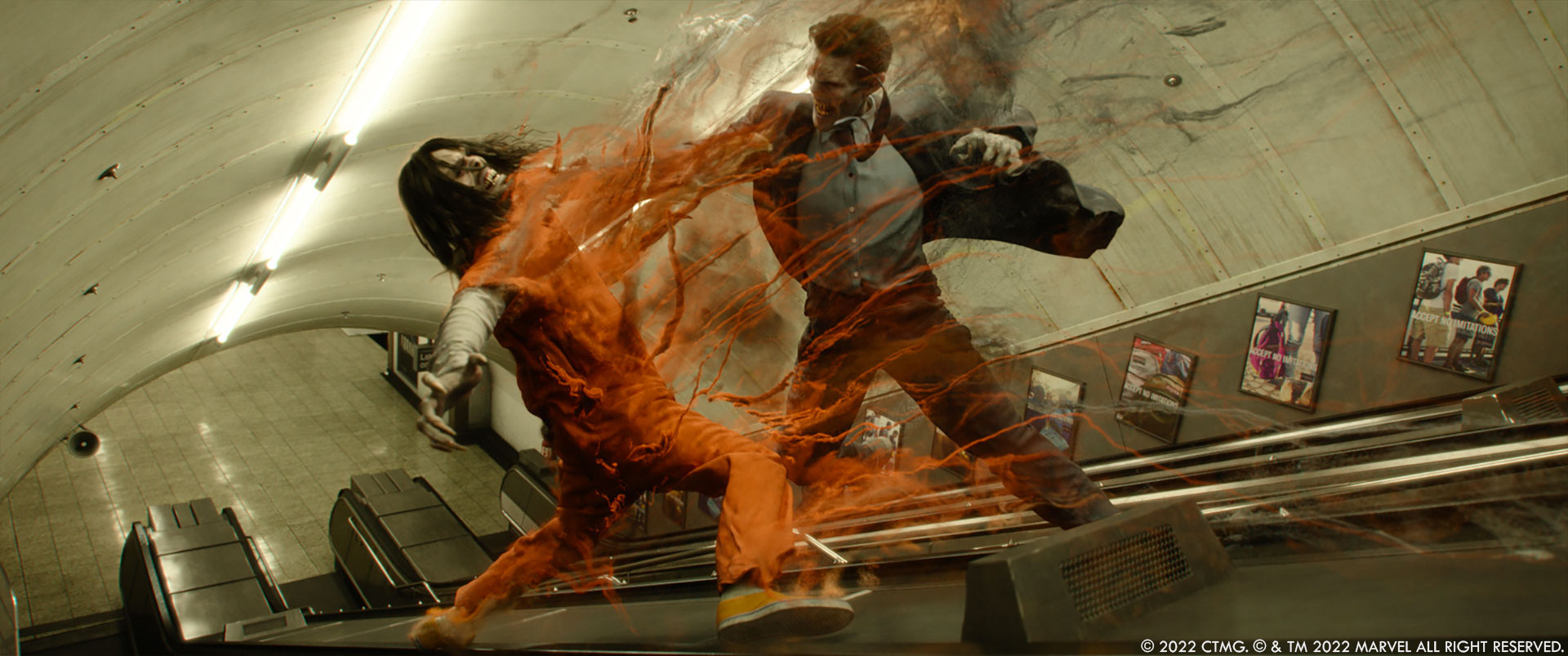
Can you elaborates about the sonar capabilities of Morbius?
We chose to visualize Morbius’ “echo-location” as wave reflections from surfaces. This was done using fluid-like surface disturbances that inherited local colors and values, along with “knowledge” of the surface geometries.
Can you tell us more about the impressive change of pupils aspect?
The pupil effect was mainly there to signal a change of state in Morbius as he channels his new skills, including echo-location. We followed a wave-like organic style that fit with the other effects. As a result, we let the boundary of the pupil convolute and undulate in a slow ripple, mixing with the sclera in the absence of the iris.
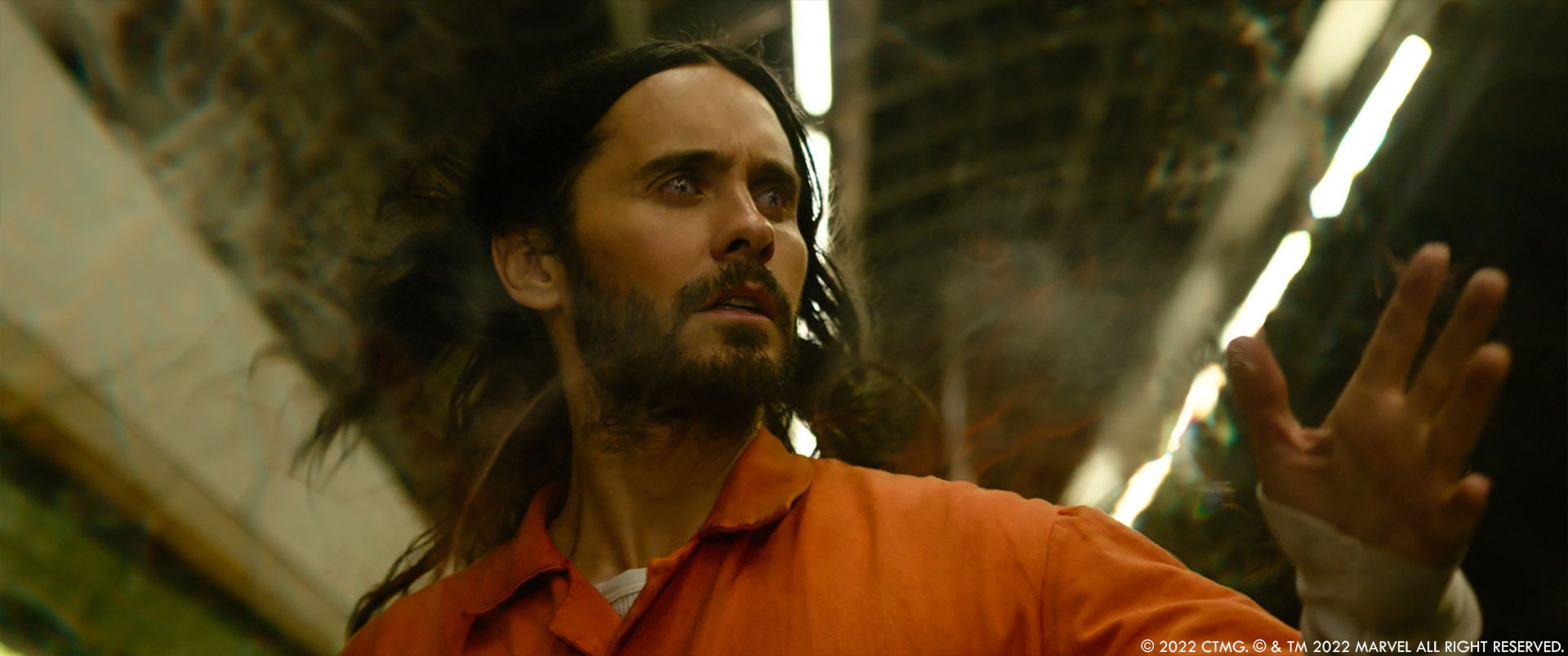
How did you recreate the environments when Morbius is flying?
Part plate photography, part projection, but often full re-creation.
Did you want to reveal to us any other invisible effects?
When Morbius transitions back to human, Jared is still 100% digital full frame on the screen. To simplify things, we just decided to tell people that it wasn’t the plate photography. I was so impressed with what Digital Domain was able to do there. It’s much easier to make a digital monster than it is to replicate your lead actor delivering a performance.
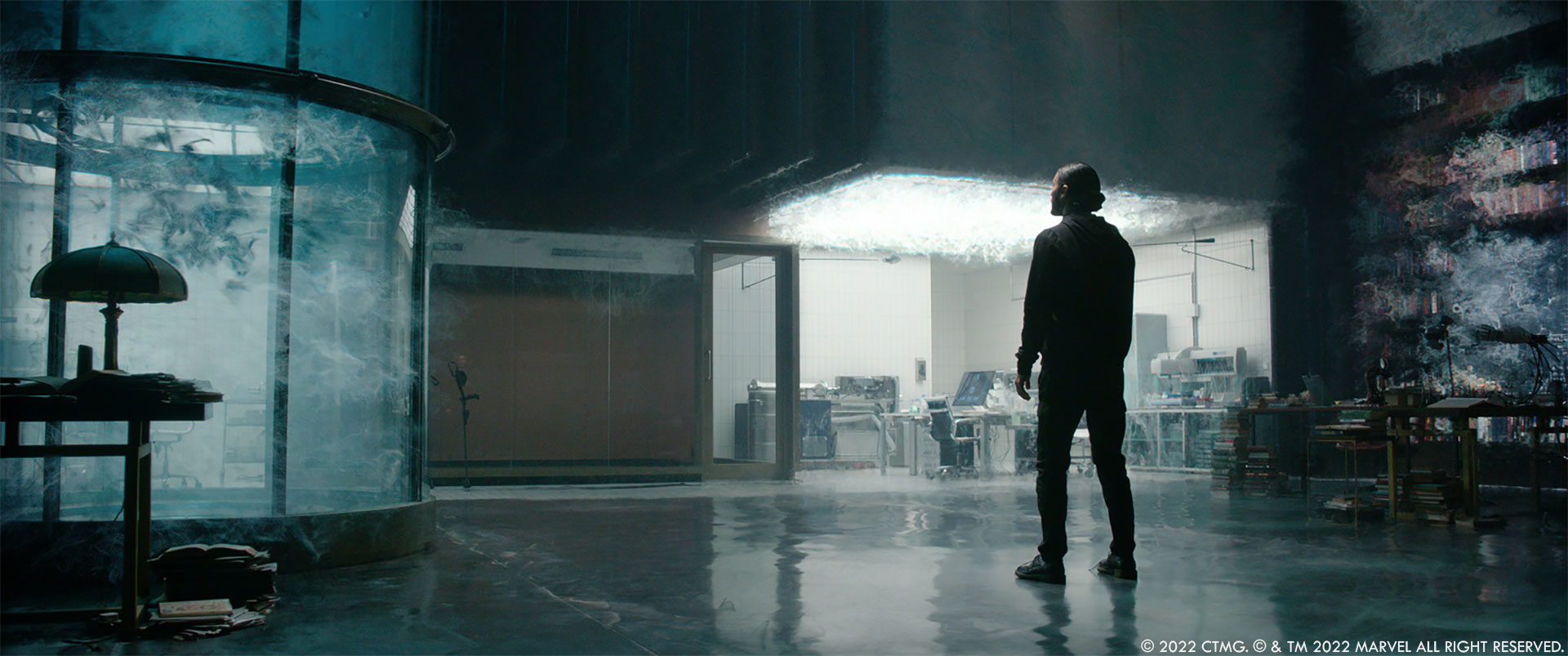
Which sequence or shot was the most challenging?
I’d say the Subway Oner or Container Ship Oner.
What is your favorite shot or sequence?
The end sequence was very successful, especially as it was all computer generated and required a lot of last minute iteration! We previsualized it and used Digital Domain’s motion capture stage to frame and design shots live. We rendered a game engine solution for the edit. I also love the screaming bat (in the cave) at the beginning of the movie!
What is your best memory on this show?
I really enjoyed the repeated VFX shoots in NYC, especially the aerials.
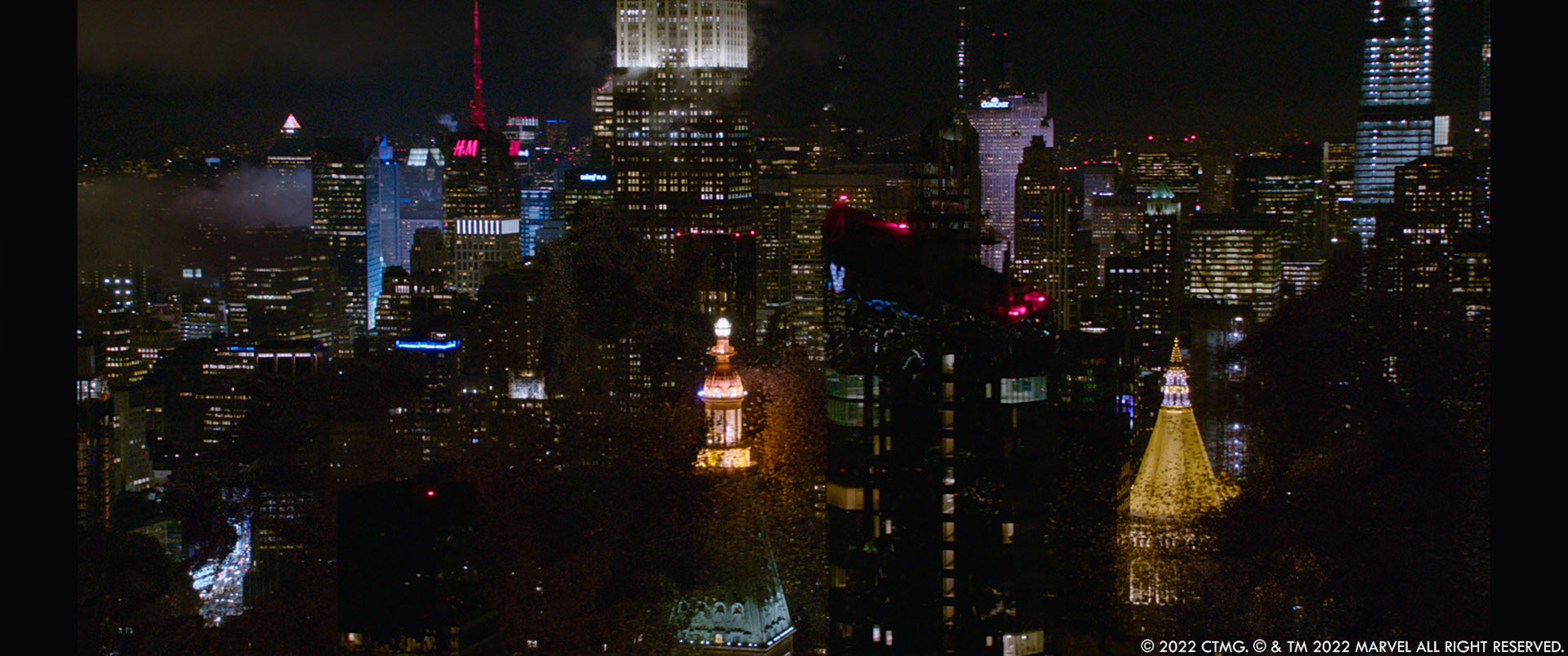
How long have you worked on this show?
More or less three years!
What’s the VFX shots count?
~1000
What is your next project?
I can’t officially discuss my next project yet, but I’m attached to work on an upcoming feature for Netflix as the client side VFX supervisor and I’m very excited to be part of it!
A big thanks for your time.
// Morbius – The 10 minutes
WANT TO KNOW MORE?
Digital Domain: Dedicated page about Morbius on Digital Domain website.
One of Us: Dedicated page about Morbius on One of Us website.
© Vincent Frei – The Art of VFX – 2022




